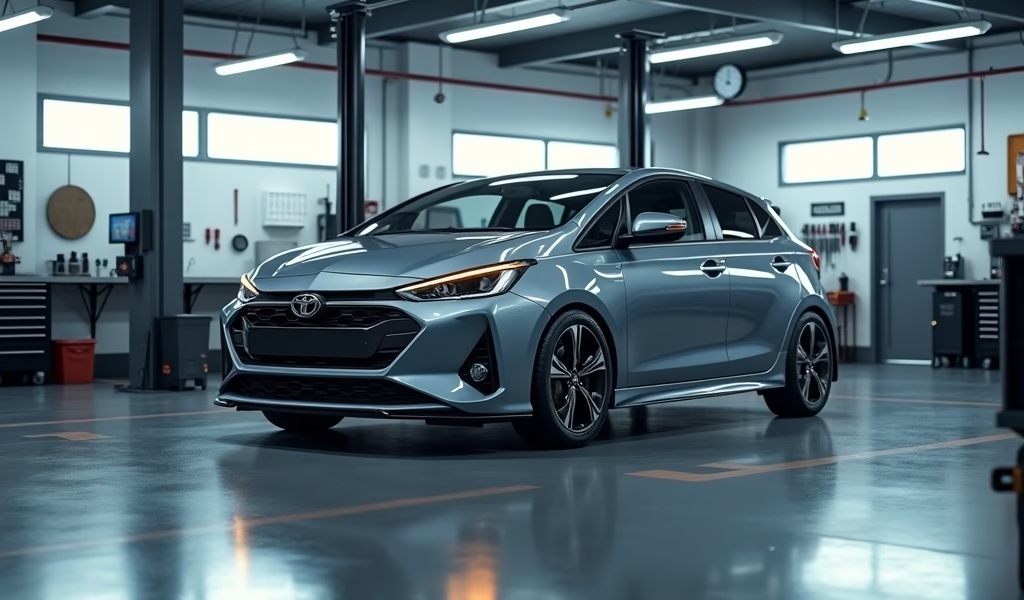Overview
This article provides young drivers with strategies to reduce expensive car insurance premiums through discounts, smart vehicle choices, and building good insurance history while explaining why rates are higher for drivers under 25. It recommends specific insurers like GEICO, State Farm, and Progressive while emphasizing the importance of maintaining a clean driving record, avoiding coverage gaps, and regularly comparing quotes from multiple companies.
Table of Contents
- Introduction
- Why Car Insurance Is More Expensive for Young Adults
- Types of Coverage Young Adults Should Consider
- Top Insurance Companies for Young Adults
- Discounts and Savings Strategies
- Tips for Building a Good Insurance History
- Special Situations for Young Adults
- Conclusion
- Frequently Asked Questions
Introduction
Finding affordable car insurance as a young adult feels a lot like trying to find a reasonably priced part for a rare foreign car – seemingly impossible and full of hidden costs. If you’re under 25, you’ve probably already experienced the sticker shock that comes with those first few insurance quotes. Insurance companies view young drivers through a lens of statistics and risk assessment, and unfortunately, your wallet pays the price.
Here’s the thing: securing proper car insurance isn’t just about meeting legal requirements – it’s about protecting one of your largest investments and your financial future. As someone who’s helped countless young drivers find that sweet spot between good coverage and manageable payments, I can tell you it’s absolutely possible to get quality insurance as a young driver without breaking the bank.
Throughout this guide, I’ll share insider knowledge about why those quotes are so high and provide practical, mechanic-approved strategies to substantially reduce your premiums. Whether you’re in college, just starting your career, or somewhere in between, these tips will help you navigate the complex insurance landscape while keeping your vehicle properly protected.
Why Car Insurance Is More Expensive for Young Adults

Let’s talk shop about why insurance companies charge young drivers so much. The hard truth is that the numbers don’t lie – according to the Insurance Institute for Highway Safety, drivers between 16-19 are nearly three times more likely to be in a fatal crash compared to drivers over 20. Insurance is fundamentally about risk assessment, and these statistics paint a clear picture for insurers.
Insurance companies operate on actuarial tables and data models that show inexperience correlates directly with accident rates. It’s similar to how I can predict certain parts will fail based on a vehicle’s mileage and maintenance history – insurers predict risk based on age and driving experience.
The financial impact is substantial. While the average driver might pay around $1,600 annually for full coverage, young adults under 25 often face premiums ranging from $3,000 to $10,000 per year. This price gap represents one of the most significant age-based financial penalties in consumer markets.
As a mechanic, I always tell young drivers that proper maintenance isn’t just about keeping your car running – it demonstrates responsibility to your insurer. Many insurance companies offer discounts for well-maintained vehicles because they’re less likely to cause accidents due to mechanical failure. Regular maintenance checks can actually save you money twice – fewer repairs and potentially lower premiums.
Types of Coverage Young Adults Should Consider
Understanding insurance coverage types is like knowing the difference between essential and optional car components – some you absolutely need, others might be nice to have depending on your situation.
Liability Coverage: This is the foundation of your insurance, similar to how an engine is essential to your car. It covers damage you cause to others and is legally required in most states. While state minimums might seem tempting to save money, they rarely provide adequate protection. I recommend at least 100/300/100 coverage ($100,000 per person for bodily injury, $300,000 per accident, $100,000 for property damage).
Collision Coverage: This pays for repairs to your vehicle after an accident regardless of fault. If you’re financing your car, your lender will require this. However, if you’re driving an older vehicle worth less than $4,000 (similar to when I advise customers whether a repair is worth it on an aging car), you might skip collision to save on premiums.
Comprehensive Coverage: This protects against non-collision incidents like theft, vandalism, weather damage, and animal collisions. Like collision insurance, this becomes optional if your car’s value is low, but provides peace of mind for unexpected events.
Uninsured/Underinsured Motorist Protection: About one in eight drivers has no insurance according to the Insurance Information Institute. This coverage ensures you’re not paying out-of-pocket if they hit you. It’s like having a spare tire – you hope you never need it, but you’ll be grateful to have it when you do.
When budget constraints are tight, prioritize robust liability coverage before adding comprehensive and collision. Consider higher deductibles for comprehensive and collision to lower your premium while maintaining protection against major expenses.
Remember that a well-maintained vehicle is less likely to malfunction and cause accidents. Just as I recommend preventative maintenance to avoid costly breakdowns, maintaining your vehicle properly can prevent claims that might increase your premiums in the future.
Top Insurance Companies for Young Adults
Not all insurance companies treat young drivers the same way – just like not all auto shops treat your car with the same level of care. Through years of helping young clients maintain their vehicles and manage their car expenses, I’ve noticed several insurers consistently providing better value for younger drivers:
GEICO routinely offers competitive rates for young drivers with a user-friendly digital experience that appeals to tech-savvy customers. Their good student discount can reduce premiums by up to 15%, making a significant dent in those high costs.
State Farm’s Steer Clear program specifically targets young drivers, combining education with potential discounts. Their local agent network provides personalized service that can be particularly valuable when navigating your first policy and any claims.
Progressive stands out with their Snapshot program, which can reward careful young drivers with rates based on actual driving behavior rather than age stereotypes. As a mechanic, I appreciate systems that evaluate performance rather than assumptions.
USAA deserves special consideration for young adults with military connections. If you or your parents have served, their rates for young drivers often significantly undercut the competition.
When evaluating customer service, J.D. Power’s Insurance Studies show that smaller regional insurers like Amica and Erie Insurance frequently outperform national brands in claims satisfaction – crucial when you actually need to use your insurance.
The ideal provider will match your specific circumstances. Just as I recommend different maintenance schedules based on driving habits, your insurance needs vary based on your situation. Finding the right insurer for young drivers often means getting quotes from at least three different companies to compare coverage options and premiums.
Discounts and Savings Strategies

Insurance companies offer numerous discounts that they rarely advertise – similar to how some shops don’t tell you about alternative repair options unless you specifically ask. Here’s your guide to unlocking those hidden savings:
Good Student Discounts: Maintaining at least a B average can reduce premiums by 10-25%. This academic achievement signals responsibility to insurers, similar to how a well-maintained service record shows you care for your vehicle.
Defensive Driving Courses: These affordable courses (typically $50-$100) can yield multi-year premium reductions. Many are available online and take just a few hours to complete – a small investment for significant insurance savings.
Usage-Based Insurance: Programs like Allstate’s Drivewise or Liberty Mutual’s RightTrack monitor your driving habits through a device or app. Safe drivers can earn discounts up to 30% – rewarding you for being careful behind the wheel.
Multi-Policy Bundling: Combining renters or homeowners insurance with your auto policy typically saves 5-15% across all policies. This strategy works even for young adults in apartments.
Family Plan Options: Remaining on your parents’ policy often results in dramatically lower rates compared to independent coverage. This arrangement can work even if you live separately in many cases.
Vehicle Choice: That sports car might catch your eye, but insurance companies will make you pay dearly for it. As a mechanic, I always advise young drivers to choose vehicles with safety features and repair affordability in mind. Four-door sedans and crossovers with strong safety ratings command much lower premiums and often have lower maintenance costs too.
The combined effect of multiple discounts can transform an unaffordable premium into something manageable. I’ve seen young drivers cut their insurance costs by over 40% by implementing several of these strategies simultaneously. Don’t leave money on the table by failing to ask about every possible discount.
Tips for Building a Good Insurance History
Your insurance history follows you much like a vehicle’s service history follows a car – influencing rates and options for years to come. Smart decisions early on can save you thousands over your driving lifetime:
Maintain a Clean Driving Record: Each ticket or accident can affect your premiums for 3-5 years. That speeding violation might cost far more in insurance surcharges than the initial fine. Defensive driving isn’t just safer – it’s financially smarter.
Avoid Coverage Gaps: Even a brief lapse in coverage can trigger rate increases when you reinstate insurance. Insurance companies view gaps as red flags, potentially raising premiums by 10-20%. Keep continuous coverage just like you’d maintain regular oil changes.
Think Strategically About Claims: For minor incidents, calculate whether filing a claim makes financial sense. If repair costs barely exceed your deductible, paying out-of-pocket often saves money long-term by preserving your claims-free discount.
Build Good Credit: In most states, insurers use credit-based insurance scores to determine rates. Young adults should prioritize on-time payments and low credit utilization. Excellent credit can reduce premiums by as much as 25% compared to poor credit – a difference that can amount to thousands over time.
As someone who works with vehicles daily, I recommend documenting all maintenance and repairs properly. This documentation not only helps maintain your vehicle’s value but can also support your case if you ever need to dispute fault in an accident investigation, protecting your insurance history.
Special Situations for Young Adults
Young adulthood comes with unique circumstances that affect your insurance options, much like specific driving conditions affect your vehicle’s needs:
College Considerations: Students attending school over 100 miles from home without a car may qualify for a “student away” discount while maintaining coverage during breaks. If you take a car to campus, updating your address is essential – rates in college towns often differ significantly from your hometown.
Using Parents’ Vehicles: Occasional use of parents’ cars generally falls under their policy’s “permissive use” provision. However, if you drive the vehicle regularly, you should be listed on the policy to avoid potential claim denials – similar to how using the wrong grade of oil occasionally might be okay, but consistently will cause problems.
Relocation Impact: Moving even a few zip codes away can dramatically change your premium. Urban areas typically command higher rates due to increased accident risk and theft probability. Some young adults save hundreds annually by maintaining their parents’ address on policies when legally permissible.
Adding Partners to Policies: Marriage typically triggers insurance discounts, as married drivers statistically file fewer claims. However, adding a roommate with a poor driving record can increase your rates substantially. Choose policy partners carefully.
When facing these transitions, consulting both your insurance agent and a vehicle maintenance expert provides valuable perspective. Understanding how insurance works for young drivers in these special situations can prevent costly mistakes and ensure you maintain proper coverage during life changes.
Conclusion
The journey to affordable car insurance as a young adult has its twists and turns, but with strategic planning, you can avoid the most expensive pitfalls. As a mechanic who’s helped countless young drivers balance vehicle care with budget constraints, I encourage you to remember these key principles:
Maintain an impeccable driving record – it’s the single most powerful factor in determining your long-term insurance costs. Take advantage of every discount you qualify for, especially good student and safe driver programs. Choose vehicles with insurance affordability in mind – that sporty model might cost you more in premiums than in fuel over time. Consider higher deductibles to lower premiums while maintaining essential coverage protection.
Most importantly, shop around regularly. Just as I recommend getting multiple quotes for major repairs, you should gather insurance quotes from at least three companies annually. Loyalty doesn’t always translate to the best rates in the insurance world.
Remember that responsible vehicle ownership combines proper insurance coverage with regular maintenance. Both protect your investment and prevent costly surprises. With patience and the strategies outlined in this guide, you can find the protection you need at a price point that respects your budget.
Take action today by comparing quotes from our recommended insurers and specifically asking about their young adult programs and discounts. Your future self (and wallet) will thank you for making informed insurance decisions now.
Frequently Asked Questions
At what age does car insurance become more affordable?
Car insurance rates typically begin to decrease around age 25, assuming a clean driving record. Some companies start reducing rates gradually from age 21 if you’ve maintained a claims-free history.
Should I stay on my parents’ car insurance policy or get my own?
Staying on your parents’ policy usually offers significant savings through multi-car discounts and their established history. This remains true even if you live separately in many cases, though you’ll need to update your garaging address.
Will my car choice significantly impact my insurance rate?
Yes, vehicle choice dramatically affects premiums for young drivers. Sports cars, luxury vehicles, and cars with high theft rates can double your insurance costs compared to a modest sedan with good safety ratings.
How much can a good student discount save me on car insurance?
Good student discounts typically save between 10-25% on premiums, depending on the insurance company. This discount often remains available for a period after graduation if you maintained good grades.
Do I need full coverage insurance if I have an older car?
Full coverage isn’t cost-effective if your car’s value is less than $4,000 or 10 times your annual premium for comprehensive/collision. For older vehicles, liability-only coverage often makes more financial sense.

